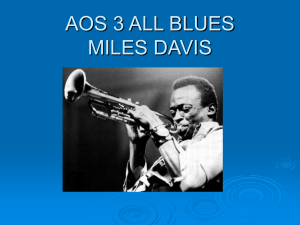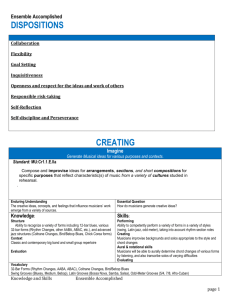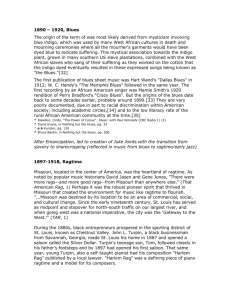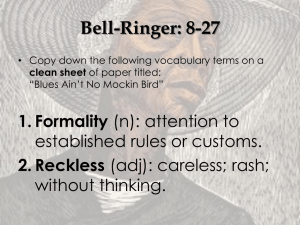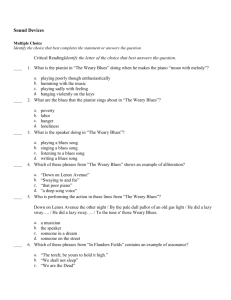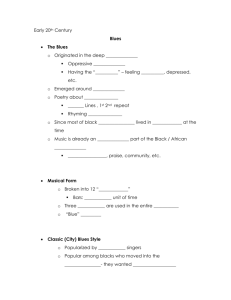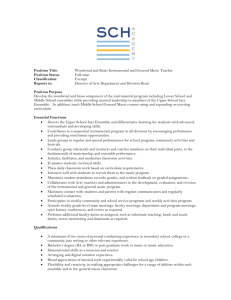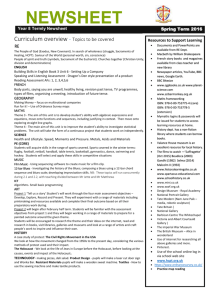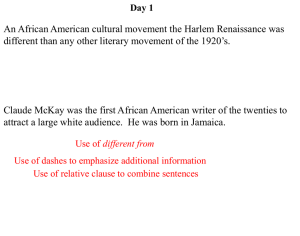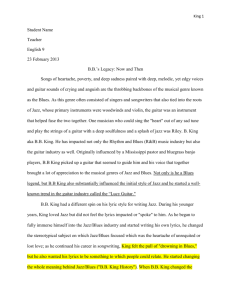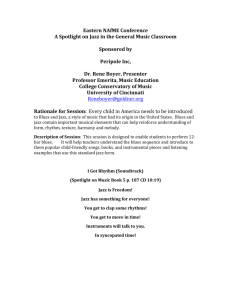Instrumental Ensemble Proficient
advertisement
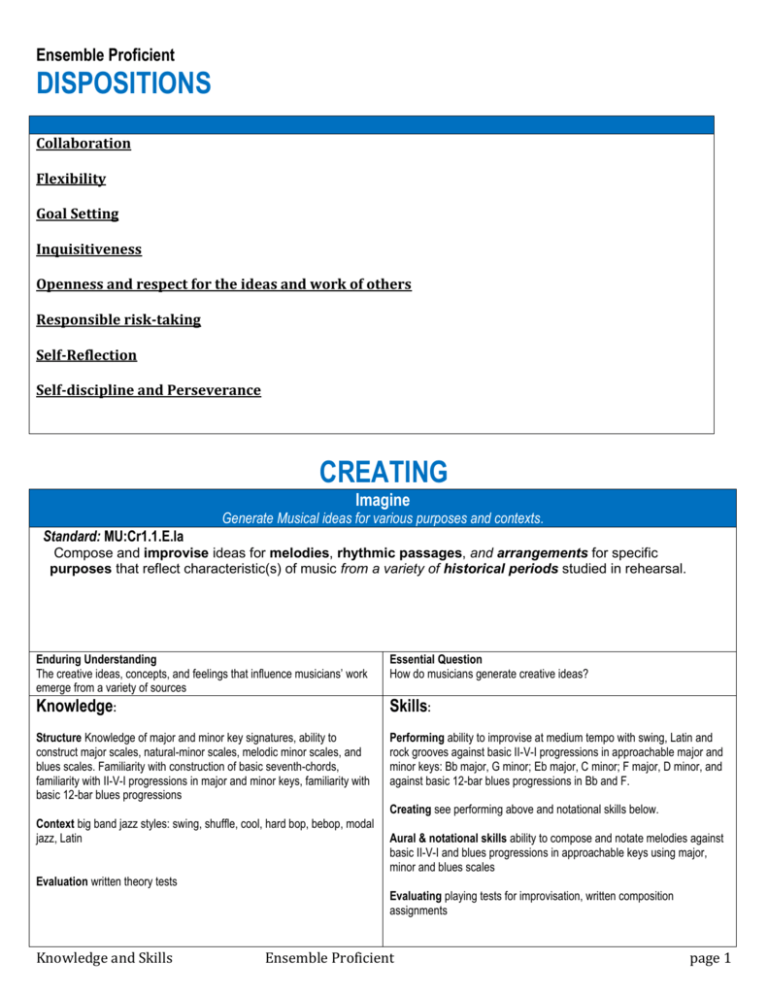
Ensemble Proficient DISPOSITIONS Collaboration Flexibility Goal Setting Inquisitiveness Openness and respect for the ideas and work of others Responsible risk-taking Self-Reflection Self-discipline and Perseverance CREATING Imagine Generate Musical ideas for various purposes and contexts. Standard: MU:Cr1.1.E.la Compose and improvise ideas for melodies, rhythmic passages, and arrangements for specific purposes that reflect characteristic(s) of music from a variety of historical periods studied in rehearsal. Enduring Understanding The creative ideas, concepts, and feelings that influence musicians’ work emerge from a variety of sources Essential Question How do musicians generate creative ideas? Knowledge: Skills: Structure Knowledge of major and minor key signatures, ability to construct major scales, natural-minor scales, melodic minor scales, and blues scales. Familiarity with construction of basic seventh-chords, familiarity with II-V-I progressions in major and minor keys, familiarity with basic 12-bar blues progressions Performing ability to improvise at medium tempo with swing, Latin and rock grooves against basic II-V-I progressions in approachable major and minor keys: Bb major, G minor; Eb major, C minor; F major, D minor, and against basic 12-bar blues progressions in Bb and F. Context big band jazz styles: swing, shuffle, cool, hard bop, bebop, modal jazz, Latin Creating see performing above and notational skills below. Aural & notational skills ability to compose and notate melodies against basic II-V-I and blues progressions in approachable keys using major, minor and blues scales Evaluation written theory tests Evaluating playing tests for improvisation, written composition assignments Knowledge and Skills Ensemble Proficient page 1 Vocabulary major keys, minor keys, scales, blues harmony, II-V-I progressions, 12-bar blues, seventh-chords, swing, voicings, bass lines, Latin, rock, funk PERFORMING Select Select varied musical works to present based on interest, knowledge, technical skill, and context. Standard: MU:Pr4.1.E.la Explain the criteria used to select a varied repertoire to study based on an understanding of theoretical and structural characteristics of the music, the technical skill of the individual or ensemble, and the purpose or context of the performance. Enduring Understanding Performers’ interest in and knowledge of musical works, understanding of their own technical skill, and the context for a performance influence the selection of repertoire. Essential Question How do performers select repertoire? In an ensemble the performers don’t select the repertoire, the director does. Knowledge: Skills: Structure awareness of 12-bar blues structure, 8 bar phrases, unison, harmony, basic forms including AABA, ABAB, etc. Discerning the shape and form of the piece being performed: where is the music going; where is the biggest moment? Performing Ability to perform with proper jazz style including swing, Latin and rock, with proper articulation (short and long notes, accents, releases, etc.). Ability to play with a controlled, supported sound, well in tune. Ability to play well in time. Ability to communicate the character of the music through articulation, phrasing and dynamics. Context how to play in various, standard jazz styles: swing, up tempo, ballad, shuffle, blues, basic Latin. Creating ability (with the assistance of the director) to make musical choices to create an effective, musical presentation of the work performed Evaluation though the level of performance at concerts and festivals. Aural & notational skills ability to perform notated figures accurately in rhythm and with proper articulation and releases. Ability to utilize dynamic markings to inform phrases utilizing a variety of dynamic levels. Vocabulary cap accent, tongue release, release, marcato, staccato, legato, blues inflection, vibrato, crescendo, diminuendo, unison, harmony, shout chorus, sax soli, Latin, Bossa Nova, clave, Basie style, Ellington style, ballad RESPONDING Select Choose music appropriate for a specific purpose or context. Standard: MU:Re7.1.E.la Apply criteria to select music for specified purposes, supporting choices by citing characteristics found in the music and connections to interest, purpose, and context. Enduring Understanding Individuals' selection of musical works is influenced by their interests, experiences, understandings, and purposes. Essential Question How do individuals choose music to experience? Knowledge: Skills: Structure recognizing basic styles (swing, shuffle, bebop, Latin, etc.) and basic forms including 12-bar blues, AABA, ABAB, etc. Performing being an engaged, informed, attentive listener Context listening to recordings and live performances of big bands and Knowledge and Skills Creating Ensemble Proficient page 2 other jazz groups in a variety of basic jazz styles. Selecting recordings by acknowledged greats of jazz to demonstrate various jazz techniques and jazz styles. Aural & notational skills aspiring to identify major key harmony, minor key harmony and blues harmony. Evaluation listening tests or written assignments about listening Vocabulary swing, cool, bebop, hard bop, blues, show tune, Latin, Bossa Nova, clave, shuffle, bass line, chord progression, solo, ensemble, sax soli, shout chorus, lead trumpet, lead alto, rhythm section, voicing, texture, orchestration, arrangement, comping, etc. Knowledge and Skills Ensemble Proficient page 3
